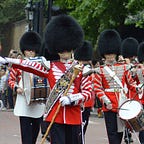Censorship in 20th Century Music: The Nazi Regime’s “Entartete Musik”
First, a discussion of “Neue Sachlichkeit” or “New Objectivity” — a new style of modernism (and hated by the Nazis)
As I began my research for this week’s blog post, I intended to delve into the “Neue Sachlichkeit” or “New Objectivity”. Neue Sachlichkeit was a movement in the art circles of Germany in the 1920’s. The philosophy of Neue Sachlichkeit was to produce art that looked towards realism, an art style that could easily be understood, as compared to the styles of expressionism or any art with abstract concepts. In other words, a new style of art that was not too complicated.
While this philosophy started within the German artists realm, Barbara Hanning, author of the Concise History of Western Music, states that “ the trend, ‘Neue Sachlichkeit,’ meaning New Objectivity, New Realism, or ‘New Matter-of-Factness’ … was quickly adopted by musicians.” Hanning continues on to explain that “New Objectivity opposed complexity and promoted the use of familiar elements, borrowing from popular music and jazz or from Classic and Baroque procedures. In their view (composers), music should be objective in its expression…”
Two examples of German composers who dabbled in this New Objectivity style of music include Ernest Krenek (1900–1991) and Paul Hindemith (1895–1963).
As I was reading about these two composers, my research took an abrupt detour to another more important topic, in my opinion. And that is the topic of the censorship of 20th century music by the Nazi Regime.
Granted, this topic is a heavy duty one, difficult to discuss and digest, unpleasant to the core. But I posit that it is this very reason, we must educate current and future generations about the horrors of the WWII Holocaust as well as the Nazi regime’s “Entartete Musik”… lest history repeat itself.
“Entartete Musik” or “Degenerate Music”
In his book Culture in Nazi Germany (2019), Michael Kater describes how “After their assumption of political power on January 30, 1933, the National Socialists (Nazi’s) set out to destroy Modernism in the arts throughout Germany, to make room for their own kind of culture, but they had made plans to do this several years before.”
Initially, this oppression by the Nazi’s was targeted towards Jewish as well as African-American composers and musicians (as well as artists). Soon the censorship went beyond race to specific musical styles. Hanning states that “The Nazis’ requirements for music were mostly expressed in negatives: music must not be dissonant, atonal, twelve-tone, ‘chaotic’, intellectual, Jewish, jazz-influenced, or left wing, which excluded most modernist music.” This would include all kinds of music considered to be in the category of modernism. Essentially, the only music that was fit to be performed in Nazi Germany were “the German composers of the nineteenth century from Beethoven to Bruckner as symbols of alleged superiority of the German people.” (Hanning)
In 1937, the Nazi’s premiered an exhibit called “Entartete Art” or “Degenerate Art” which educated the public on all of the artists and their works that were banned by the Nazi regime. The website for the Victoria and Albert Museum in London, UK, has an inventory list that you can view of all the art that was banned by the Nazi’s.
Following quickly on the heels of “Entartete Art” was the exhibition, “Entartete Musik” or “Degenerate Music” which premiered in 1938. Many composers who are well-known today were pictured in that exhibit. The Music and the Holocaust website states “Composers included in the exhibition included Jewish musicians, foreign artists and Modernists including Paul Hindemith, Alban Berg, Ernst Toch, Hans Eisler, Igor Stravinsky, Franz Schreker, Ernst Krenek and Kurt Weill. Banned Jewish composers included Meyerbeer, Mendelssohn, Schoenberg, Ernst Krenek and Bruno Walter.”
As an example of the racial intolerance, prejudice and oppression that was a part of Nazi Germany, here is a Letter to the Music Editor of the New York Times, entitled “Incident in Vienna”.
It is difficult for me to even read this Letter to the Editor. I have little tolerance for prejudice or racism. It is even more difficult for me to view the cover for the pamphlets that were available at the “Entartete Musik” exhibit. The artwork is highly offensive, featuring a caricature of an African-Amercan man playing the saxophone (a jab at the main character of Ernest Krenek’s opera, Jonny spielt auf (Johnny Strikes Up the Band; 1927) with the added racial emphasis of Star of David as Jonny’s carnation on his tuxedo. You can read about the exhibit handbill here.
As I circle around to my original topic of “New Objectivity” music that emerged in Germany in the 1920’s, let it be noted that this is an example of a musical style which never survived beyond its infancy due to the censorship of the Nazi regime.
Who knows what kinds of advances or musical treasures we may have witnessed had the banned composers of the Entartete Musik been free to practice their creative craft. While I understand that many of the composers that were included in the Nazi’s Entartete Musik were able to emigrate away from Nazi strongholds, I imagine there were still disruptions in their creative processes during this stressful and traumatic time frame.
WWII and the Holocaust, in and of itself, was an absolutely horrible period in history. I shudder every time I think of the millions of Jewish, gay, foreign allies and political prisoners who perished in the concentration camps. There are just are no words for this tragedy.
Let us never, as humankind, ever tread that road again. As difficult as it is to discuss, keep this piece of history alive so that we may never die to it again.
